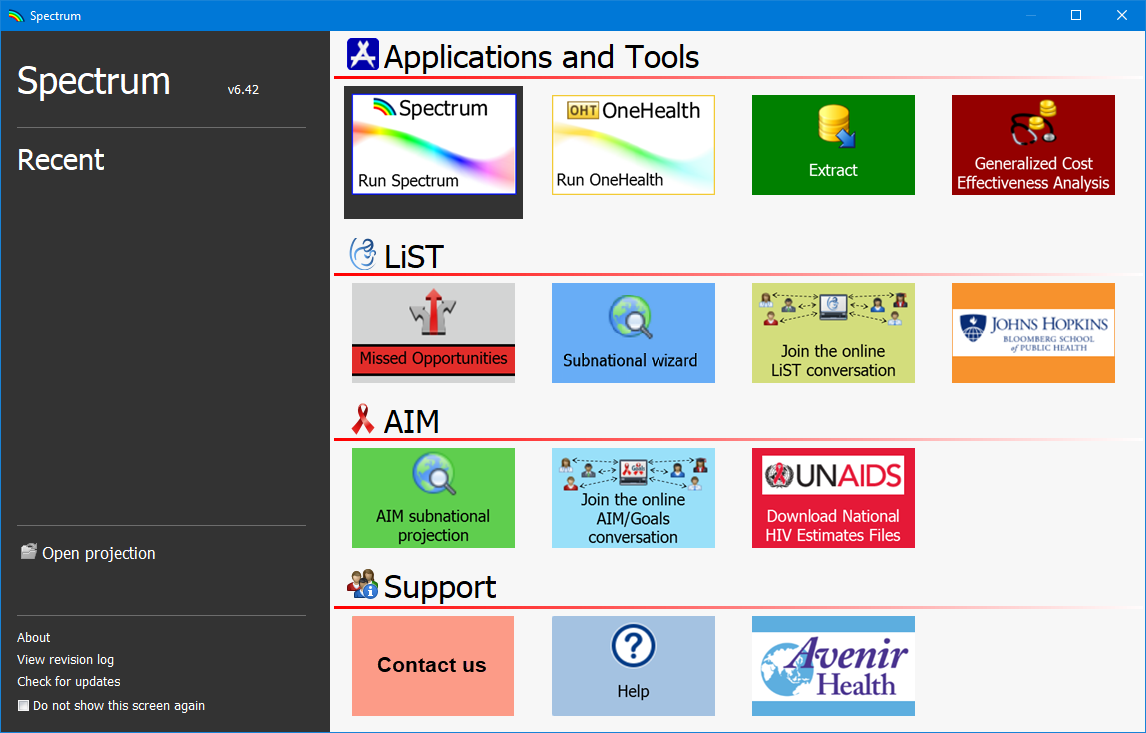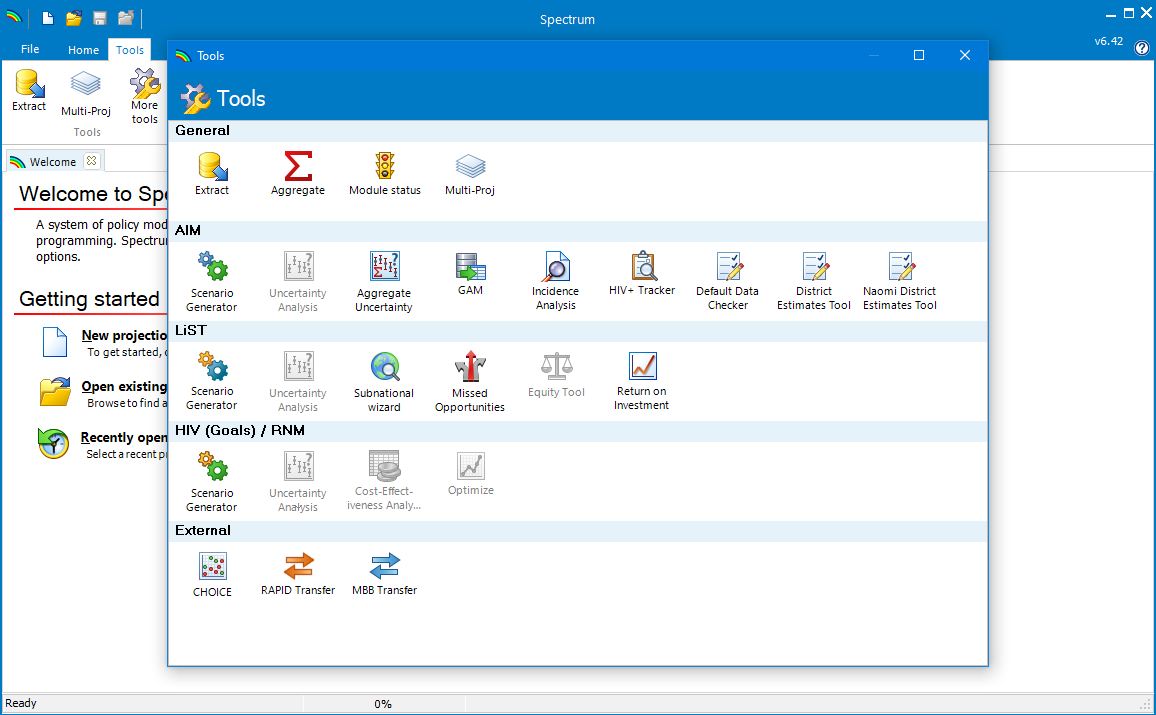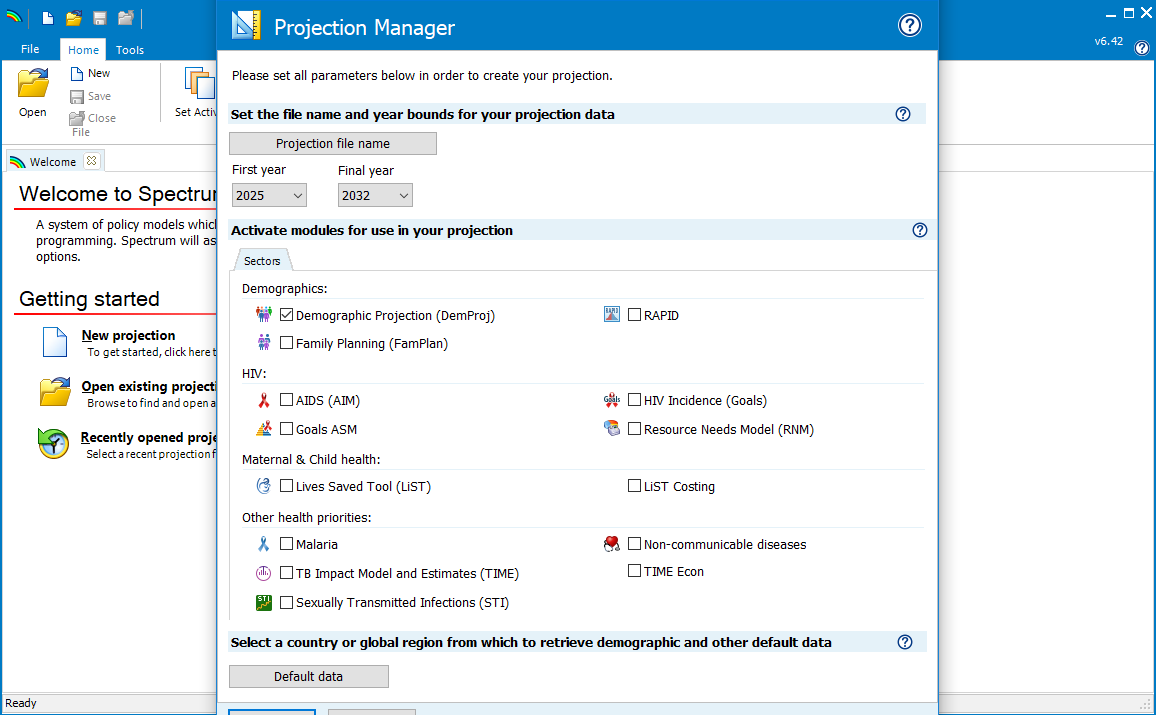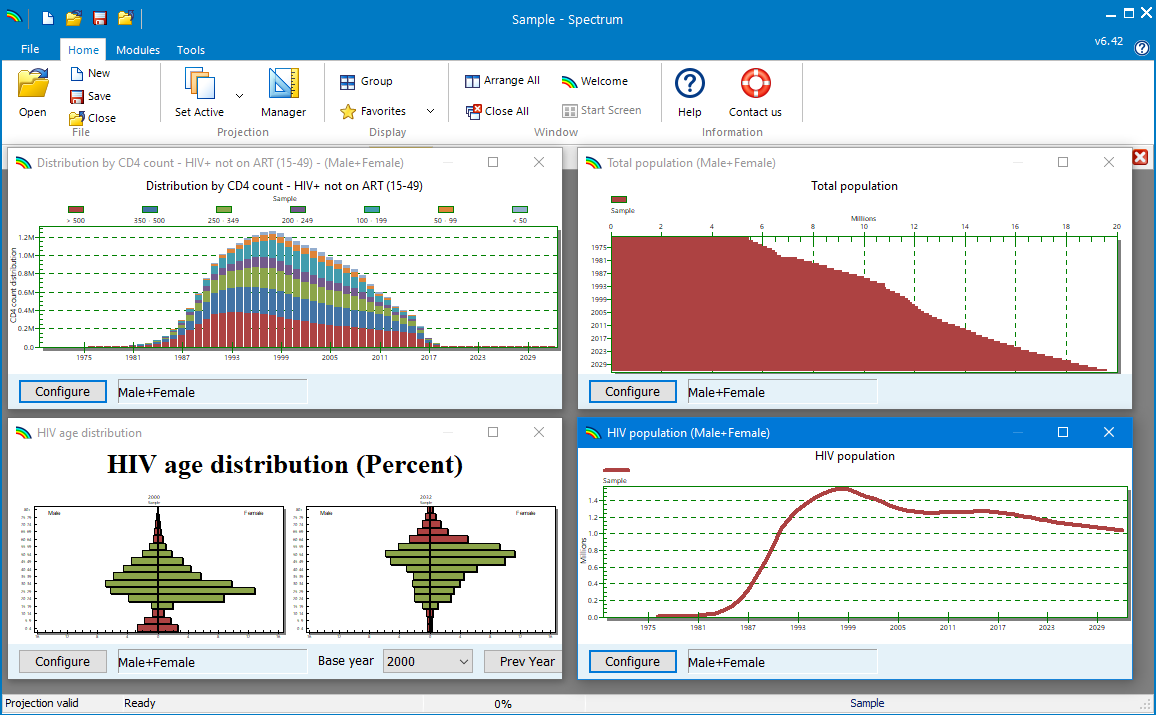Run Spectrum Desktop
The Spectrum suite of tools includes a wide variety of policy models in a single, user-friendly program.
Downloads Spectrum for Windows operating systems. If you have trouble downloading, you may also try our mirror link.
Current version: ...




Most models are available in English, French, and Spanish. Some are also available in Portuguese, Arabic, and Russian. Spectrum consists of several software models including:
DemProj
Demography
DemProj projects the population for an entire country or region by age and sex, based on assumptions about fertility, mortality, and migration. A full set of demographic indicators can be displayed for up to 50 years into the future. Urban and rural projections can also be prepared. A companion model, EasyProj, supplies the data needed to make a population projection from the estimates produced by the Population Division of the United Nations.
FamPlan
Family Planning
FamPlan projects family planning requirements needed to reach national goals for addressing unmet need or achieving desired fertility. It can be used to set realistic goals, to plan for the service expansion required to meet program objectives, and to evaluate alternative methods of achieving goals. The program uses assumptions about the proximate determinants of fertility and the characteristics of the family planning program (method mix, source mix, discontinuation rates) to calculate the cost and the number of users and acceptors of different methods by source.
LiST
Lives Saved Tool
A program to project the changes in child survival in accordance with changes in coverage of different child health interventions. More information on LiST can be found here.
AIM
AIDS Impact Model
AIM projects the consequences of the HIV epidemic, including the number of people living with HIV, new infections, and AIDS deaths by age and sex; as well as the new cases of tuberculosis and AIDS orphans. AIM is used by UNAIDS to make the national and regional estimates it releases every two years.
Goals
The Goals Model helps efforts to respond to the HIV/AIDS epidemic by showing how the amount and allocation of funding is related to the achievement of national goals, such as reduction of HIV prevalence and expansion of care and support.
Resource Needs Model
Costs of implementing an HIV/AIDS program
The Resource Needs Model estimates the costs of implementing an HIV/AIDS program, including costs for care and treatment, prevention programs, and policy and program support.
RAPID
Resources for the Awareness of Population Impacts on Development
RAPID projects the social and economic consequences of high fertility and rapid population growth for such sectors as labor, education, health, urbanization, and agriculture. This program is used to raise policymakers' awareness of the importance of fertility and population growth as factors in social and economic development.
TIME
TB Impact Model and Estimates
TIME is a suite of TB analytic tools used for the epidemiological, impact and cost-effectiveness analysis and other rational steps of strategic TB policy and program design.
Malaria
Impact of malaria interventions
The Malaria module helps malaria control programs in countries with endemic malaria to project over time their feasible intervention coverage targets, expected impact on malaria infection prevalence, malaria case load and malaria-attributable mortality, in 3 distinct age groups, and the associated costs and cost-effectiveness of alternative policy scenarios or strategic plans.
STI
Estimation of burden and trends in Sexually Transmitted Infections
STI estimates the prevalence and incidence of active syphilis, gonorrhea and chlamydia, and their historic time trend, in national adult populations, based on prevalence surveys and routine sentinel surveillance. STI is used by the WHO as the basis for national, regional and global estimates of syphilis burden.
NCD
Non-communicable diseases and mental health, substance abuse, and neurological disorders
NCD estimates the burden and potential impact of interventions on non-communicable diseases like cardiovascular disease, diabetes, and cancers, as well as mental health, substance abuse, and neurological disorders.
Final AIM versions are used to generate global HIV estimates for each respective year. AIM releases correspond to the Spectrum release of the same version.
AIM Version History
Detailed instructions on how to use the software. Also includes sections on data sources, interpreting and using the results, a tutorial, and a description of the methodology.
Manuals
Other
Due to the evolving nature of Spectrum development, the following historic versions have been preserved to ensure consistent analysis for Spectrum or the specified Spectrum module.
Spectrum versions
| File | Date | Direct |
|---|---|---|
| Spectrum v5.5761 | 26 Aug 2019 | |
| Spectrum v5.03 | 10 Feb 2014 | |
| Spectrum v4.71 | 3 Dec 2013 | |
| Spectrum v3.56 | 1 Nov 2010 |
Country Data Pack